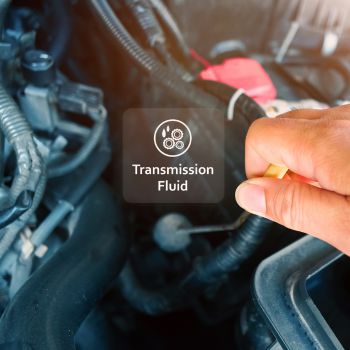 If you suddenly find that your vehicle cannot shift as well or you notice a strange sound when you change gears, these signs point to low transmission fluid. Learn about the role of this fluid and other signs that it’s low.
If you suddenly find that your vehicle cannot shift as well or you notice a strange sound when you change gears, these signs point to low transmission fluid. Learn about the role of this fluid and other signs that it’s low.
About the Transmission System
The transmission system transfers power from the engine to the wheels, so it moves. It also regulates power as you speed up or slow down and facilitates this process through a series of gears.
Between these two functions, the transmission fluid lubricates all parts and helps manage heat. These properties extend across manual and automatic transmission systems.
Based on age, the transmission fluid varies in appearance. Ideally, it’s red or pink with some transparency. Old fluid starts to look darker or takes on a milky, opaque appearance.
Without sufficient fluid, your transmission system does not:
- Cool down as easily and risks overheating.
- Receive sufficient hydraulic pressure – in the case of automatic transmission – and may no longer shift as effectively.
- Have a consistent relationship with the engine, which can affect how power passes to the wheels and how well the system shifts.
- Have sufficient lubrication, which results in parts rubbing together, increases friction and adds debris to the fluid.
Based on manufacturer recommendations, the transmission fluid should be changed every 40,000 to 100,000 miles. Levels may drop at a faster pace in response to a leak involving the transmission pan, gaskets, the axle or torque converter.
Warning Signs of Low Fluid
In addition to checking the fluid reservoir in your engine, look out for the following signs of low transmission fluid:
- Strange Sounds: A clunking or whining sound, especially as you shift.
- Difficulty Shifting Gears: With a manual transmission, you may notice that you can change gears but your car takes about three seconds to respond. If you drive an automatic, your car takes longer to accelerate or doesn’t respond when you put the vehicle in reverse. At some point, you may find you can’t shift the transmission at all. Ignoring this issue can overheat and damage the transmission gears.
- Overheating: Insufficient transmission fluid increases friction among the gears and other parts, leading to overheating. Ideally, the fluid should not be heated above 200 degrees Fahrenheit and as the system increases in temperature, you may notice a burning smell. In addition to overheating the fluid, this pattern can cause varnish deposits to form on the system’s parts, harden or crack its seals, and cause the transmission band to slip or slide around.
- Slipping Gears: In addition to difficulty shifting, you may notice that the transmission system starts to slip or won’t remain in the chosen gear. Your vehicle may speed up or slow down randomly or as you attempt to shift, all signs of a change in hydraulic pressure. This factor alone can increase your risk of an accident.
- Leaks: Signs include red-colored fluid pooling underneath your vehicle, as well as darker-colored fluid inside the reservoir.
- Strange Smells: You may encounter a sweet smell, indicating a leak from your engine or a burning scent, indicating fluid overheating.
Ignoring the signs of low fluid can lead to transmission failure, which may require part or all of the system to be rebuilt. If you’re concerned about the transmission system or it’s time for a fluid flush, schedule an appointment with DaSilva’s Auto Body today!




